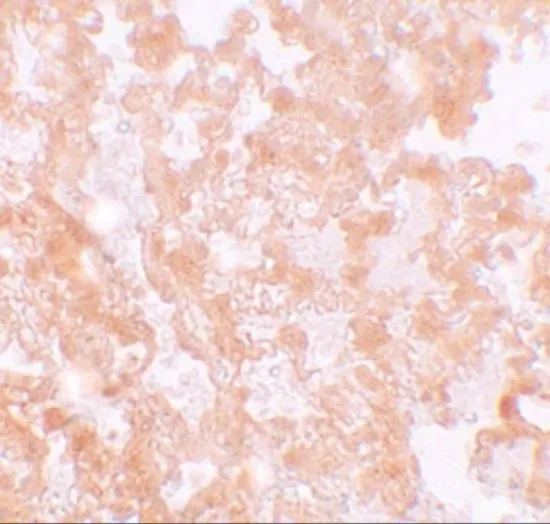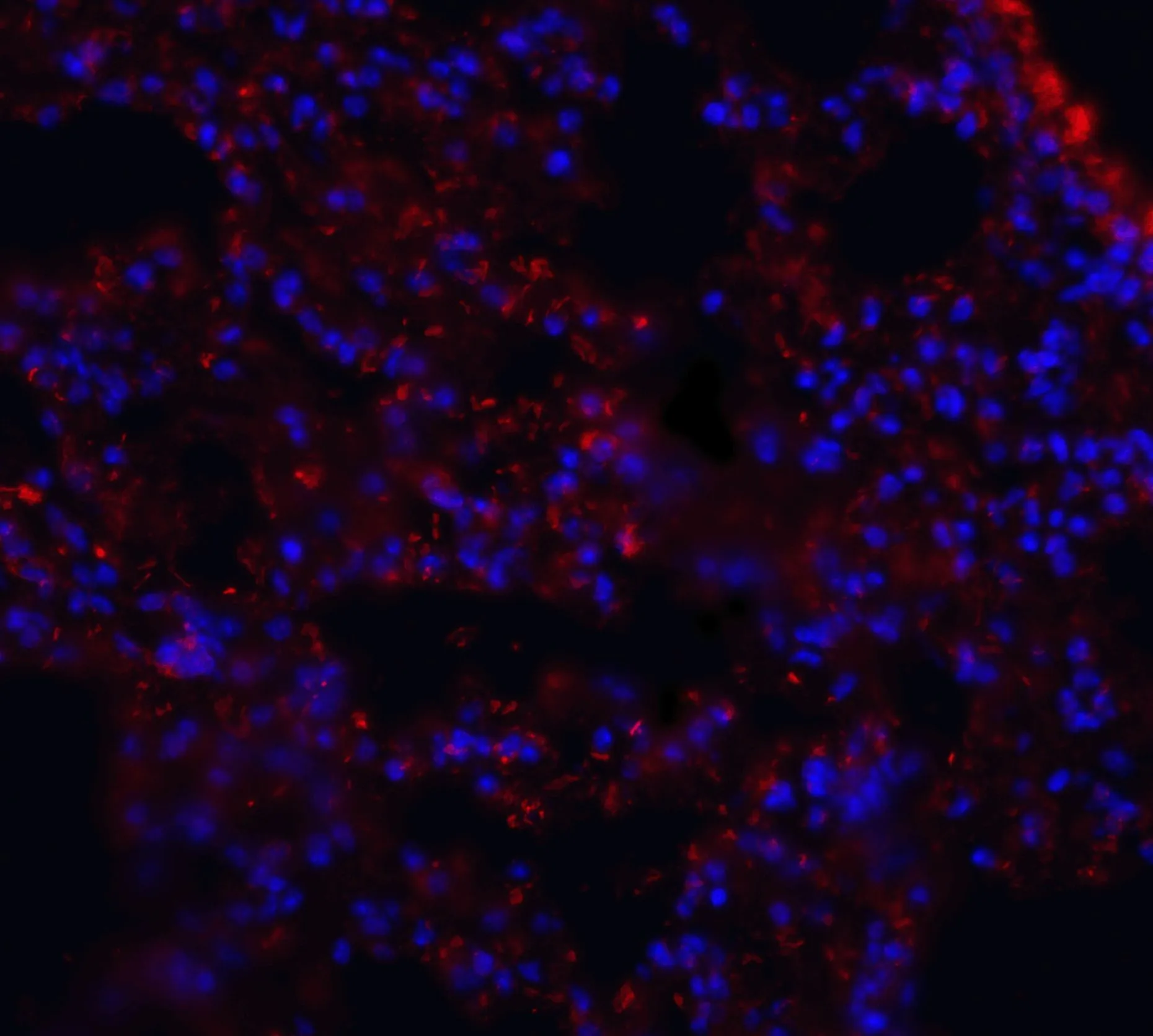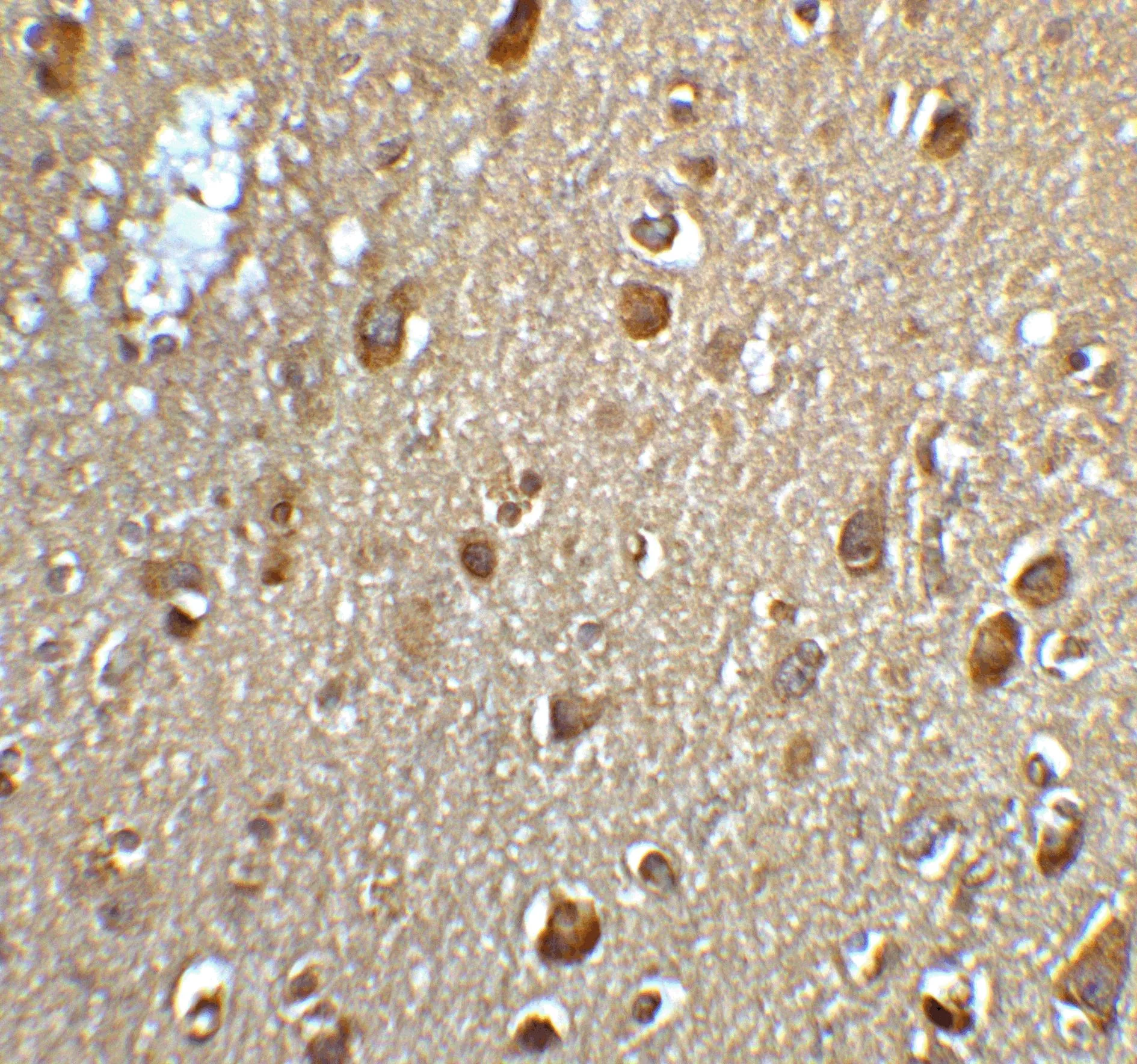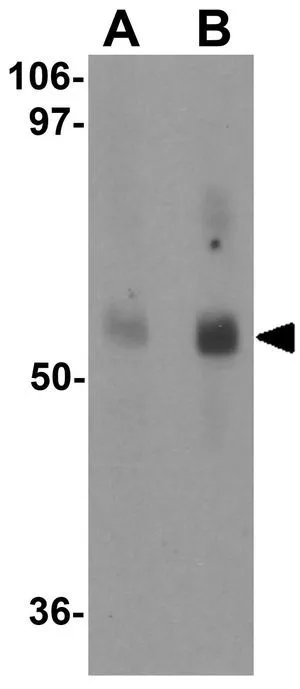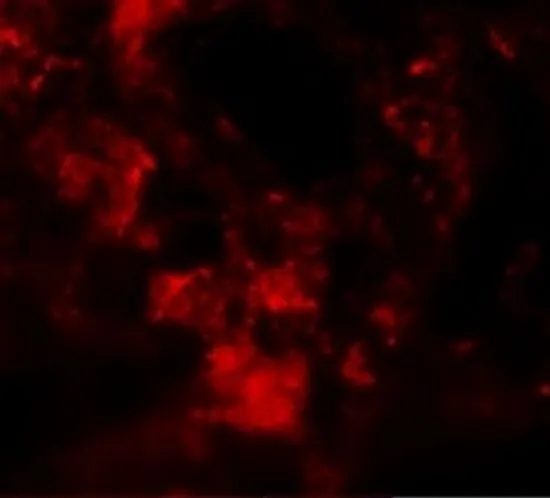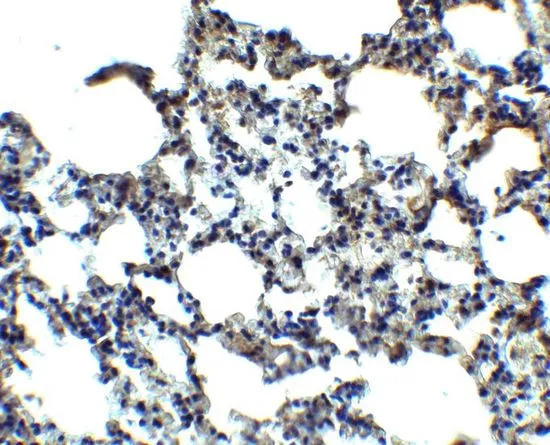
IHC-P analysis of mouse lung tissue using GTX85147 MFSD2A antibody. Working concentration : 2.5 microg/ml
MFSD2A antibody
GTX85147
ApplicationsWestern Blot, ELISA, ImmunoHistoChemistry, ImmunoHistoChemistry Paraffin
Product group Antibodies
ReactivityHuman, Mouse, Rat
TargetMFSD2A
Overview
- SupplierGeneTex
- Product NameMFSD2A antibody
- Delivery Days Customer9
- Application Supplier NoteWB: 1 - 2 microg/mL. IHC-P: 5 microg/mL. *Optimal dilutions/concentrations should be determined by the researcher.Not tested in other applications.
- ApplicationsWestern Blot, ELISA, ImmunoHistoChemistry, ImmunoHistoChemistry Paraffin
- CertificationResearch Use Only
- ClonalityPolyclonal
- Concentration1 mg/ml
- ConjugateUnconjugated
- Gene ID84879
- Target nameMFSD2A
- Target descriptionmajor facilitator superfamily domain containing 2A
- Target synonymsmajor facilitator superfamily domain-containing protein 2A; MCPH15; MFSD2; NEDMISBA; NLS1; SLC59A1; sodium-dependent LPC symporter 1; sodium-dependent lysophosphatidylcholine symporter 1
- HostRabbit
- IsotypeIgG
- Protein IDQ8NA29
- Protein NameSodium-dependent lysophosphatidylcholine symporter 1
- Scientific DescriptionMultidrug transporters, such as MFSD2A, are membrane proteins that expel a wide spectrum of cytotoxic compounds from the cell and render cells resistant to multiple drugs. Major Facilitator Superfamily (MFS) members are capable of transporting various substrates such as sugars, polyols, drugs, neurotransmitters, amino acids, peptides, and inorganic anions, although most members are substrate-specific. MFSD2A is a novel lung cancer tumor suppressor gene that regulates cell cycle progression and matrix attachment and has recently been described as the human receptor for syncytin-2, a retrovirus-derived protein mediating fusion of placental trophoblasts. MFSD2A is expressed in many tissues and is highly induced in liver and brown adipose tissue (BAT) during fasting. The activation of the betaAR signaling pathway plays a major role in the induction of MFSD2A expression during adaptive thermogenesis.
- ReactivityHuman, Mouse, Rat
- Storage Instruction-20°C or -80°C,2°C to 8°C
- UNSPSC12352203

